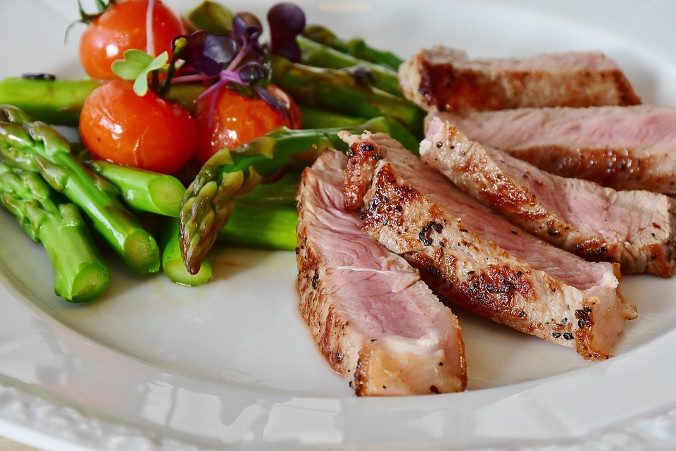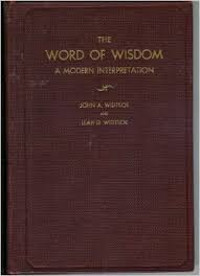I’m deviating from my normal blogging style for several months to share brief information about books that have significantly helped me obtain better health.
To read the first post in this series, “Books that Helped Me Lose 100 Pounds, Part 1: Introduction,” please click here.
To read the second post in this series, “Books that Helped Me Lose 100 Pounds, Part 2: The First 20,” please click here.
To read the third post in this series, “Books that Helped Me Lose 100 Pounds, Part 3: The Second 40,” please click here.
To read the fourth post in this series, “Books that Helped Me Lose 100 Pounds, Part 4: The Final 40,” please click here.
To read the fifth post in this series, “Books that Helped Me Lose 100 Pounds, Part 5: Cookbooks,” please click here.
Disclaimer: I’m not a doctor or a dietitian. I do not recommend or endorse a particular health regimen. My intention is to provide a few insights into what has worked for me at various times of my life. The information in these posts is no substitute for individual medical advice, and you use it at your own risk. These books, in the end, were not even enough for me. I lost the final 40 pounds by working with a registered dietitian. I talked about that in the fourth post of this series.
The Word of Wisdom: A Modern Interpretation, by John A. Widtsoe and Leah D. Widtsoe (LDS non-fiction)
“The Word of Wisdom, a code of health dealing primarily with human nutrition, was promulgated as a divine revelation in 1833 by Joseph Smith, the ‘Mormon’ Prophet. It is a part of the religious system of the Church of Jesus Christ of Latter-day Saints which declares that the care of the body is a sacred duty; and it has been practiced measurably by members of the Church with very favorable results.
“Three objectives have been kept in mind in the preparation of this book. First, to make clear the meaning of the Word of Wisdom in terms of modern knowledge. Second, to show that the learning of the last century confirms the teachings of the Word of Wisdom. Third, to furnish some information for the guidance, through proper nutrition, of those who seek to retain, improve or recover their health.”
Biographical note: John A. Widtsoe graduated from Harvard University with a degree in chemistry and went on to earn a Ph.D. in physiological chemistry (biochemistry) from the University of Göttingen. In 1921 he was called to be a member of the Quorum of the Twelve Apostles in the Church of Jesus Christ of Latter-day Saints. Leah D. Widtsoe was a renowned home economist.
This book was originally published in 1937 and is full of health information that was “modern” for its time. Eighty years have passed since then, and nutritional science has progressed by leaps and bounds. That being the case, how can this be the one book about health that I wish I had read sooner?
From the time I was a little child, I’ve been taught the Word of Wisdom. If you aren’t a member of The Church of Jesus Christ of Latter-day Saints as I am and would like to know what the Word of Wisdom is, here is a link you may find helpful. The Word of Wisdom provides a template that is flexible enough to accommodate all sorts of dietary patterns, cuisines, and individual health needs. Because it is so flexible, members of the Church often feel confused about how to follow all aspects of it. I am no different from others in this respect. I’m old enough to remember many health trends—both mainstream and obscure, and both helpful and harmful—and everything in between. I’ll admit that I’ve followed misguided health information. I’ve also followed reasonable health information that appeared to support the advice of the Word of Wisdom in many respects and discovered that what I was doing (or not doing) wasn’t going to work for me indefinitely. Sometimes I’ve simply misunderstood or misapplied good information.
I remember when some of the recommendations from Elder and Sister Widtsoe’s book were considered either insignificant or downright unhealthy by “modern” scientific standards. Those standards, however, have been shifting, and sometimes I’ve had a difficult time shifting with them. For me, the most interesting thing about the Widtsoes’ book is that much of the information in it is still so very “modern.” It is helping me identify what dietary standards of our day actually promote good health and what information I can safely ignore. If health experts in 2017 are recommending foods and habits that knowledgeable people considered healthy in 1937, I can be relatively sure that the information is true. Had I read and followed the advice in this book sooner, I might have been able to avoid some of the pitfalls I told you about in my other posts.
Here is some “modern” advice from Elder and Sister Widtsoe that would have particularly benefited me:
REFINED, “DEVITALIZED,” AND ADULTERATED FOODS:
Modern knowledge has given man the power to refine his foods, until some of them may become very much changed from the natural conditions in which they are found. The common use of such refined, and in most cases concentrated foods, has at times, for want of adequate knowledge, led to injurious results.
“Evils and Designs”
In communities where good natural food is available, deficiency diseases are rare. They are often associated with poverty; but unfortunately they are also common today amongst all classes because the food used by many careless or uninformed modern civilized people yields a shortage, in greater or lesser degree, of the different vitamins and minerals. This is too often due to ignorance of the facts of nutrition, as well as to an unnatural or perverted appetite; or to the desire of unscrupulous persons to profit by sales of devitalized foods.
“In the Season Thereof”
A warning must be given against soft drinks, candies and all foods flavored or colored with chemical substances of unknown physiological properties. Such flavoring extracts or colorings should not be used unless it is definitely known that they are harmless. Since such chemical products are much cheaper, there is a temptation to use them in preference to the known natural flavorings and vegetable colorings. The long continued use of harmful ingredients, even in small doses, may become dangerous.
“Healthful Drinks”
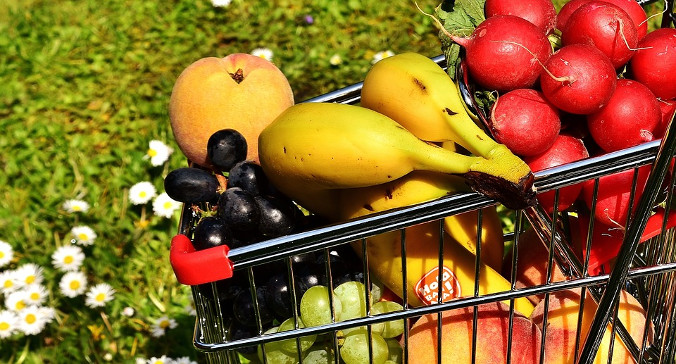
MEAT AND ANIMAL FAT:
One-third of the American dietary consists of meat. This is too high both from the physiological and the economic point of view. . . . Undoubtedly, if the present amount of meat consumed in America were cut in half, better health, greater resistance to disease, keener zest of life, and truer enjoyment would wait upon the people.
“Meat . . . Sparingly”
It must be emphasized again that while there must be some protein in the food every day, it may be other than meat protein. ()
“Meat . . . Sparingly”
Milk, cheese and eggs are most valuable and should form the bulk of the protein requirement.
“Meat . . . Sparingly”
Milk, an important source of protein, contains other valuable food substances. . . . Milk also contains vitamins A, D, G [riboflavin], and some B, especially if cows are fed on green pasture. . . . Whey, which contains the milk sugar and most of the minerals of the milk, is an excellent food.
“Meat . . . Sparingly”
Animal fats are most valuable because of their content of Vitamin A.
“Food Constituents”
The best sources [of vitamin A] are fish liver oils, fresh butter or cream, egg fat, egg yolk (where cows and chickens have been fed on green food), kidney, the yellow fats of animals, and the green and yellow vegetables and fruits.
“In the Season Thereof”

CHOCOLATE:
Three substances are of special concern in the study of “hot drinks”: caffeine and its near chemical relatives, theophylline, and theobromine. These have to some degree the same or similar physiological effects. They are usually associated in nature, though caffeine predominates in coffee and tea, and theobromine in chocolate and cocoa. . . .
Chocolate contains less theobromine than cocoa, and chocolate candy still less. However, the accompanying concentrated sugary preparations used excessively, are a menace to human health. . . . The chocolate habit, which is related to the caffeine habit, is a matter of common observation, and should be controlled.
“Hot Drinks”
The well-nourished body has no unnatural cravings and does not need a “lift.”
“Hot Drinks”

SUGAR AND STARCH:
One of the commonest dietary errors of today is the overeating of starchy foods, with or without fats and sugars, such as macaroni, rice, cereals, cakes, pastry and desserts—thereby satisfying the hunger so that no desire remains for foods that contain building materials with regulating minerals and vitamins. The excessive use of starch, sugar or fat, unbalances the diet by supplying an excess of one of the essential food elements, the energy producing one.
“Grains”
Many food experts claim that the excessive use of carbohydrates, sugars and starch in the diet may be the direct cause of diabetes, and all agree that the increased use of these foods certainly does greatly aggravate the disease.
“Grains”
It is the excessive use of starches and sweets which tend to cause overweight or underweight. The use of wholemeal cereal and bread, with fruit, vegetables, milk and meat (sparingly) will cause one to reach normal development, being neither too fat nor too thin.
“Wheat For Man”
Referring to beet and cane sugar:
There are many disadvantages resulting from the excessive use of sugar as food. It is an artificially prepared product, is totally lacking in proteins, mineral salts and vitamins. It is distinctly a habit-forming food; those who have never used it do not like it, but a taste for it is easily acquired, after which one is tempted to overeat on sweet foods which leads to an unbalanced diet. This habit-forming nature has contributed greatly to the consumption of sugar.
“Grains”
Even nature’s sweet foods, fresh or dried fruits, honey or syrup, are good foods, but their proper use should be understood and followed; they should be eaten moderately, usually as a dessert.
“Grains”
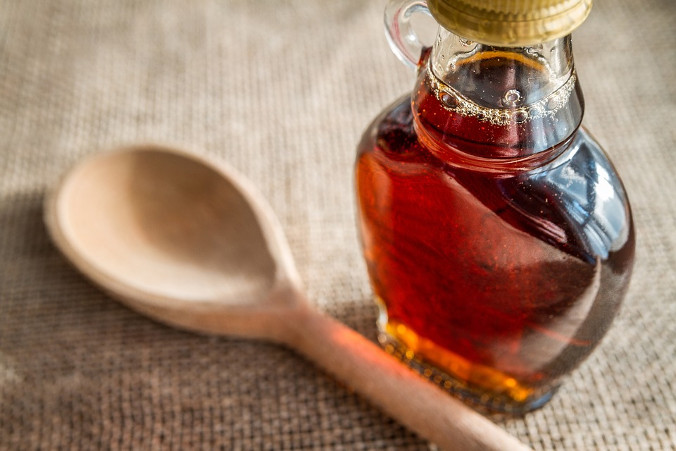
WHAT TO EAT:
Foods Rich in Vitamins. Such are: All fresh vegetables and fruits, nuts, grains, milk, cheese, eggs and to some degree fresh meats. These foods should form the bulk of the human diet, for they form the source of all vitamins, minerals, proteins and energy needs.
“In the Season Thereof”
The best protection against food fraud is to use natural foods and food products, even though the cost may seem higher.
“Evils and Designs”
Natural foods, as prepared by Mother Nature, are best for man and beast. Beware of all artificial synthetic food products or drinks made by man for commercial gain. It is wiser to spend a little more money for natural foods than to spend it to cure or alleviate a diseased body.
“Healthful Drinks”
A good wholesome diet composed of all nature’s food “in season” should be the rule—and one should learn to enjoy all natural foods—excluding none; for each food possesses some special element or substance needed by the body mechanism.
“Prudence and Thanksgiving”
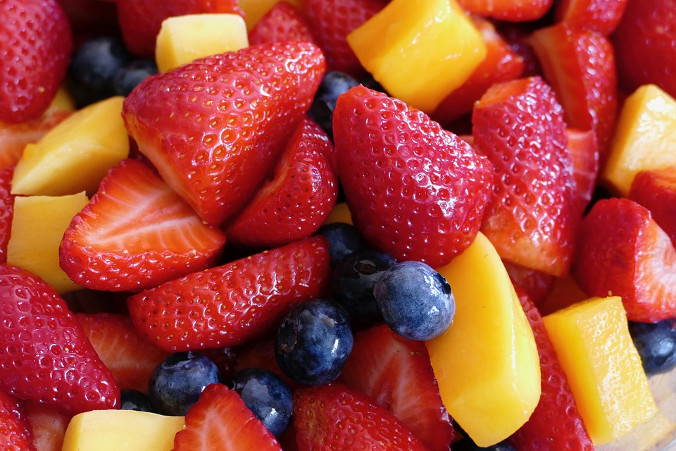
HOW TO EAT:
It is not to be wondered at that most children and many adults dislike vegetables, for they are often so poorly cooked that their natural flavor is changed beyond recognition.
In contrast are the properly cooked peas, beans, spinach or asparagus which resemble little bunches of jade-green goodness as delicious as a breath of fresh clean air. Each vegetable has a distinct flavor and when properly cooked should be enjoyed as a real epicurean delight. They ought to be so well cooked that, as in France, they may serve as a delicious course by themselves rather than as negligible additions to the meal.
“All Wholesome Herbs”
Food fads and fancies do not overtake the prudent man who weighs with intelligence all the requirements of life, and practices them in moderation.
“Prudence and Thanksgiving”
The featured image and other photographs of food used in this post came from Pixabay.

